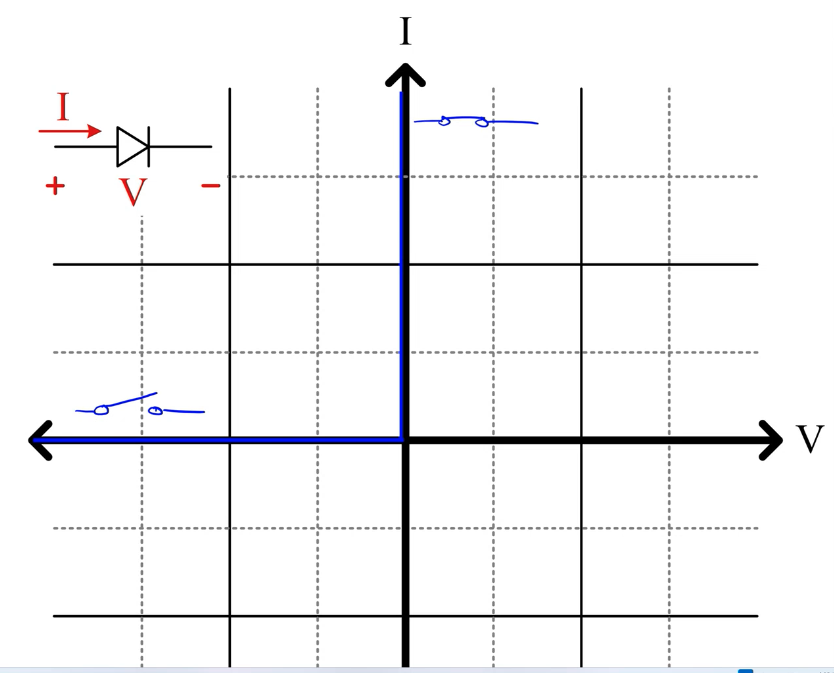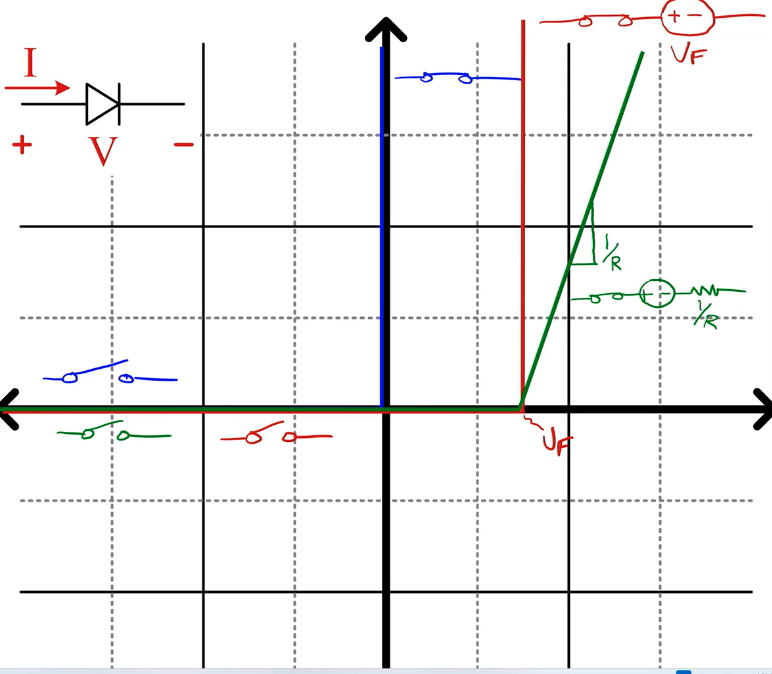Here are some models (ways to think about diodes).
Simple switch
The simplest way to think about a diode is like a switch. If I push in the correct direction, it’s just a switch that’s on. More specifically, there is any voltage occurring in the forward direction, it’s like a switch that turns on. In the diagram below, we have:
- Negative voltage means that the switch is open (no current flowing)
- Positive voltage means that the switch is closed (flowing!)

Switch with an offset voltage
In this slightly more complex model, when we hit the required forward voltage, the switch closes but we have to pay a voltage “penalty”. Basically, once the diode is on, we have a constant voltage drop as a price we pay for turning it on.
The forward voltage is the penalty – if , then we know that the diode is only on once we’ve exceeded and then we’re like a closed switch where we’ve paid the price of .
This is the primary model for MTE 220.

Switch with offset voltage and resistance
A further more complicated model accounts for the fact that there is a slope at the operating point due to resistance. Once we have reached the required voltage, we pay the penalty of and any additional current goes through a resistor.

Exponential Models
Finally, we can think of diodes in terms of an exponential model as introduced in Exponential Current Relationship.